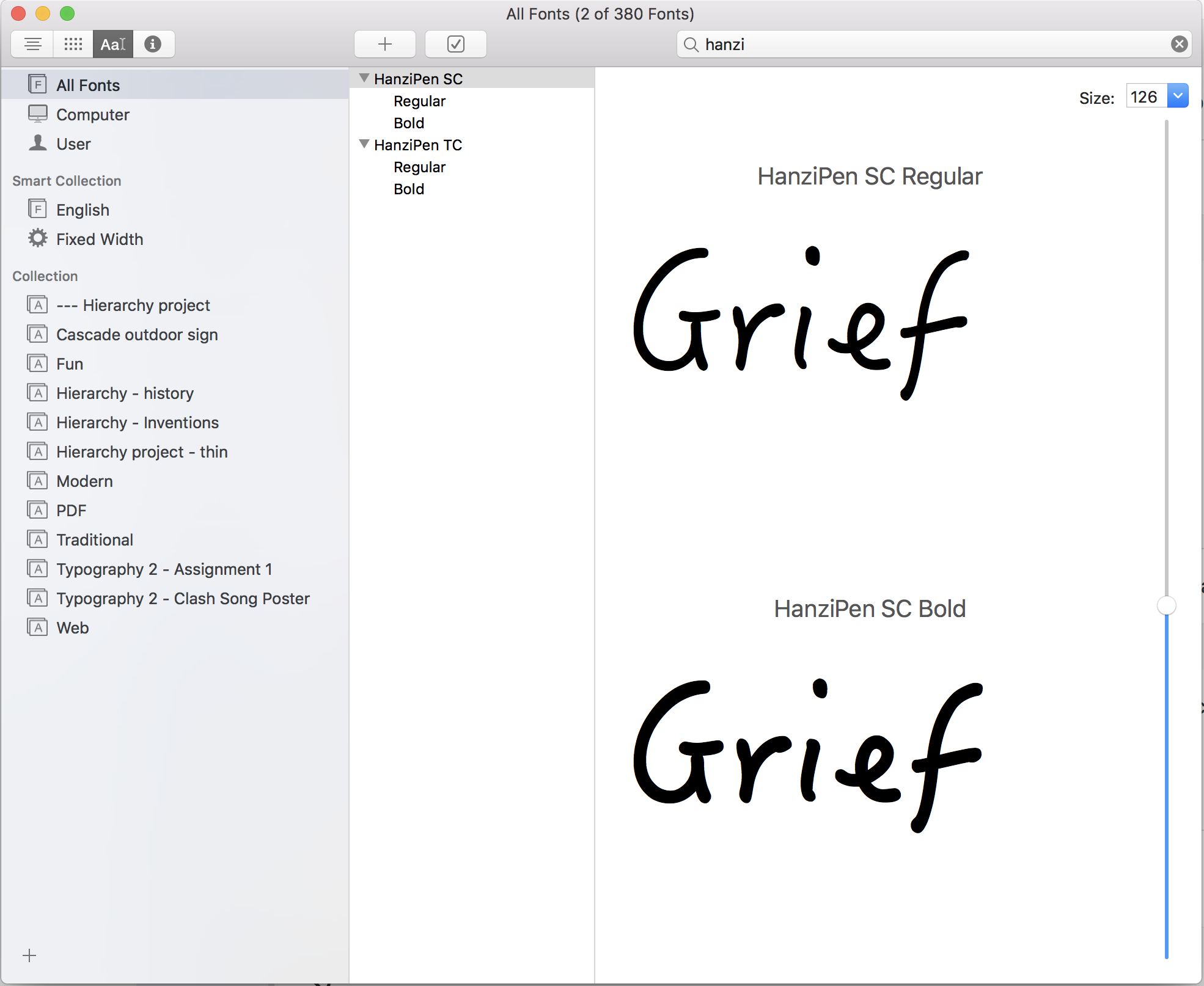Breaking News
Hanzipentc Bold Font Word
понедельник 12 ноября admin 83
In Word, how can we make bold text (such as by pressing Ctrl+B/the B button) use the bold variant of a differently named font from that of the non-bold font? We're using the Light weight of the Open Sans font. Marking some text as bold makes Microsoft Word use what looks like a synthetic automatically boldified version of the Light weight, rather than the Bold weight. How can we make it use the actual Bold weight? Open Sans; we have them all installed. However in Word the Light weight shows up as a distinct typeface called ‘Open Sans Light’.
The typeface called ‘Open Sans’ just has the Regular and Bold weights. Obviously the font showing up as ‘Open Sans Light’ doesn't have a bold weight. How can we tell Word that when it's emboldening something in Open Sans Light it should use the Bold weight from Open Sans? Alternatively, is there a way of installing a duplicate of Open Sans Bold as Open Sans Light Bold, such that Word will find it and automatically do the right thing?

Microsoft Word, Photoshop, Corel Draw, Adobe Illustrator, Autocad, Sony Vegas, Adobe Reader: Than to open a file: For Windows: FontForge, CorelDRAW Graphics Suite X5-X7, CorelDRAW Graphics Suite 2017, FontCreator, Microsoft Windows Font Viewer, AMP Font Viewer. For Mac OS: FontForge, Apple Font Book, Bohemian Coding Fontcase, Mac OS X Font Book. The best website for free high-quality Hanzipen Tc fonts, with 9 free Hanzipen Tc fonts for immediate download, and 16 professional Hanzipen Tc fonts for the best price on the Web. TC Kingsley RR Bold Italic. Red Rooster Collection Hide Show Add to Favorite Download. Start from $45.00.
We want to set up a template document such that all users in the organization can easily follow the house style and get the right fonts in all our documents, without them needing to know anything about how that's implemented. Rather than implement a macro/macros in Word (as prior answers have suggested) you can create duplicate copies of the Bold and Bold/Italic versions of 'Open Sans' and edit them such that they become part of the 'Open Sans Light' family.
Gvox encore 5 0 2 keygen crack. Basically, you just: • Create new copies of the Open Sans Bold and Open Sans Bold Italic font files, naming the filename appropriately. • Edit the new font file(s) using (for example), to change the font family and font name to be correct for 'Open Sans Light'. Now distribute/install the new font variants in the same way as you would with any other font file, and Word (and any other application) will now see them correctly. This isn't too difficult - set the font for the Strong style to Open Sans Bold. See the screengrabs below showing the same thing with Eras Light/Eras Bold. To apply this to all instances of bold text automatically without your users needing to specify the Strong style or manually run a find and replace, consider macro-enabling the file (save as.docm) and adding the following code to ThisWorkbook area in the Visual Basic Editor (press Alt+F11 to access the VBE).
Private Sub Document_Close() Selection.Find.ClearFormatting Selection.Find.Font.Bold = True Selection.Find.Replacement.ClearFormatting Selection.Find.Replacement.Style = ActiveDocument.Styles('Strong') With Selection.Find.Text = '.Replacement.Text = '.Forward = True.Wrap = wdFindContinue.Format = True.MatchCase = False.MatchWholeWord = False.MatchWildcards = False.MatchSoundsLike = False.MatchAllWordForms = False End With Selection.Find.Execute Replace:=wdReplaceAll End Sub This will run the find and replace when your users save and quit.
Normally, these buttons do work as toggles. They may not if the selection includes conflicting settings, for example, if part of a selected paragraph is bold and another part is not. If nothing is selected (that is, the insertion point is blinking), clicking a button would turn off the corresponding attribute at the insertion point. On the other hand, if you are saying that applying (say) bold, makes the entire document formatted in bold, then see.
Stefan Blom Microsoft Word MVP Volunteer Moderator (MVP program information: https://mvp.microsoft.com/). This is unexpected behavior. If you try the same in a new, blank document, do you still see the same? If the problem remains in a new, blank document, try the following: Exit Word. Restart it in Safe mode. To start in Safe mode, hold the Windows logo key as you press R; in the Run dialog, type winword /safe and press Enter (note the spaced before the slash). Create a new document and try bolding/unbolding text.